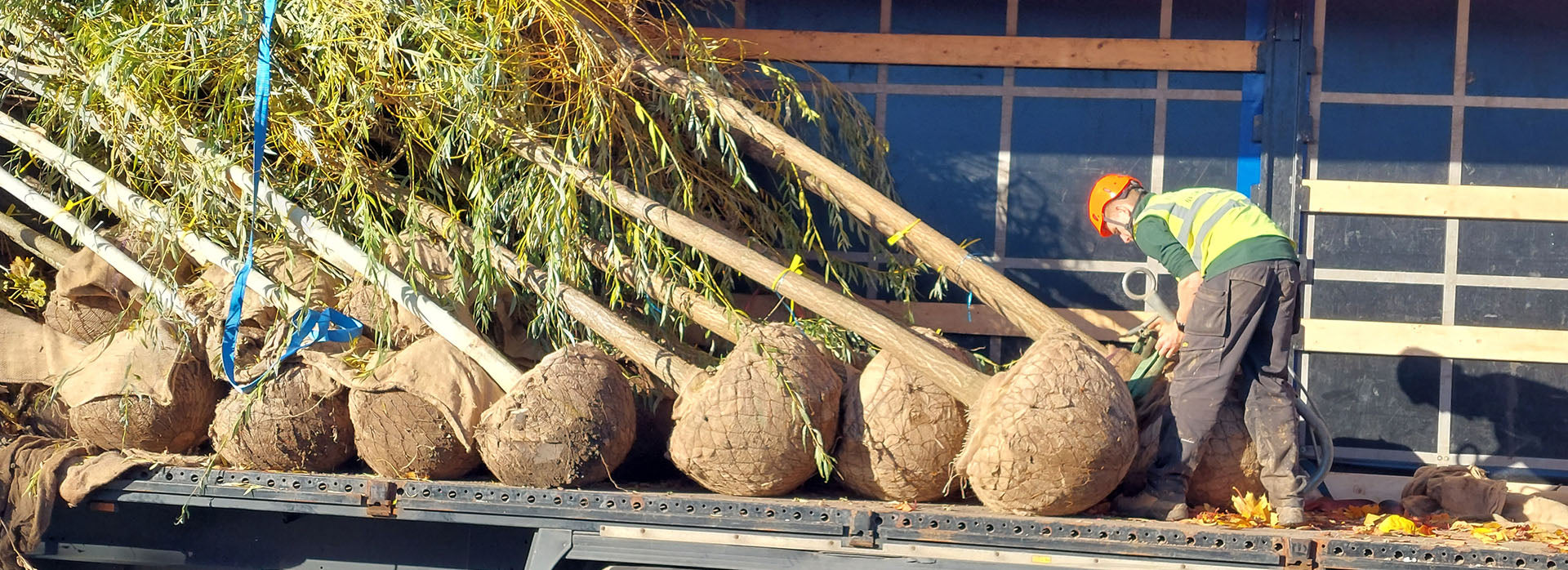
PROFESSIONALS
Biosecurity
Biosecurity Crisis
What is Biosecurity?

Majestic Trees has been calling for much tighter controls on the movement of trees across Europe and into the UK since our first open letter to industry (one of many) in May 2013. Subsequently, our MD has been very active in the industry debate because of the avalanche of new pest and diseases that have hit Europe over the past 10 years. He has spoken at a number of events about the need for change, though in the early days his concerns often fell on deaf ears. With major threat from Xylella fastidiosa, however, a growing number of professional growers are now joining the voices for change. Those voices include His Royal Highness The Prince of Wales, (now King Charles III), who on 1 February 2018 called a Biosecurity Conference at Highgrove, inviting key nurserymen from the UK and mainland Europe, along with important industry stakeholders and policymakers, to discuss the issue as a matter of urgency, and just [prior to lockdown, HRH held a second conference at Kew.
Change could be dramatic. For example, Hillier’s have called for a complete ban on plant movements, implying that they don’t import trees and that all their stock is UK grown. This is purely to give themselves a commercial advantage, but Barcham’s are proposing a complete ban on rootballs going direct to site from Europe. These proposals may, at face value, seem unrealistically drastic, but both would indisputably reduce pest and disease movement and are more realistic prospects post Brexit, especially in context of the seriousness of the threat, especially from Xylella. HRH The Prince of Wales articulated the gravity of the situation very well at the Highgrove conference, posing the question “when the stakes are so high how can we say it is too much to ask?”, going on to say that “the future without trees is unthinkable, and to contemplate this demands a national emergency”. With statements like “we must find a solution before it is too late” and “if we fail to act we will be showing our arrogance towards nature”, it was a very passionate speech indeed, especially when HRH recounted his personal experience of first felling 160 Elms at Highgrove 38 years ago, but now in the past 10 years he had been felling Ash, Oaks, Aesculus, Castanea and what next? His sentiment was certainly one of action, not discussion, and I think we all sensed that this sentiment was shared by Michael Gove, the Minister then responsible for DEFRA.

One could spend a lot of time explaining the complexities of the issue, but the central problem is that there is a staggering amount of plant material circulating around Europe, much of which is passing through Holland from the south of Italy, where Xylella has destroyed huge swaths of plant material. Therefore it is absolutely vital that any of us in the industry sourcing plant material ask our plant suppliers EVERY TIME for proof of where the plants, trees, etc. being sourced have been growing over the last TWELVE months, and if this cannot be proved, REFUSE TO BUY THEM. With so many threats none can afford to be complacent, and not just in the interest of the greater good – imagine the liability to be faced by accidentally introducing Xylella into a project? Will the supplier you have sourced from stand behind their product when the general contractor sues? These are not questions any of us want to be facing.
EU regulations state, rubber stamped by DEFRA since we left the EU, state that should a confirmed case of Xylella be documented, all infected plants must be destroyed along with every potential host plant (there are 300+ species) within 100 meters, followed by a quarantine on the area that will be enforced for 5 years.
This would take some explaining to a client, particularly if Defra’s best industry practice guidelines had not been followed in sourcing the plants.

What is the Plant Health Management Standard?
The Plant Health Management Standard has been developed by industry and government with input from third sector organisations. The Standard was developed in response to an increasing awareness that the movement and management of live plant material can spread new and potentially ecologically damaging plant pests.
The Standard sets out key requirements for plant health and biosecurity management and is relevant to a range of horticultural businesses and organisations that make up the live plant supply chain.
What is the Plant Health Certification Scheme?
The Plant Healthy Certification Scheme enables businesses and organisations to be independently audited as a means of formally demonstrating that they comply with the Plant Health Management Standard.
The ultimate aim is for the Scheme to be adopted across the ornamental and amenity horticulture supply chain to make it easy to identify businesses and organisations that handle plant material in a manner that promotes plant health and biosecurity.
Our MD served on the originally planning committee for this scheme, and we as a company were one of the originally companies to be audited and approved. Our nursery is inspected and audited each year, and to date we have always passed with flying colours. Make sure your supplier is ‘Plant Healthy’ certified; it is the only standard that gives you the assurance that they take biosecurity seriously.


